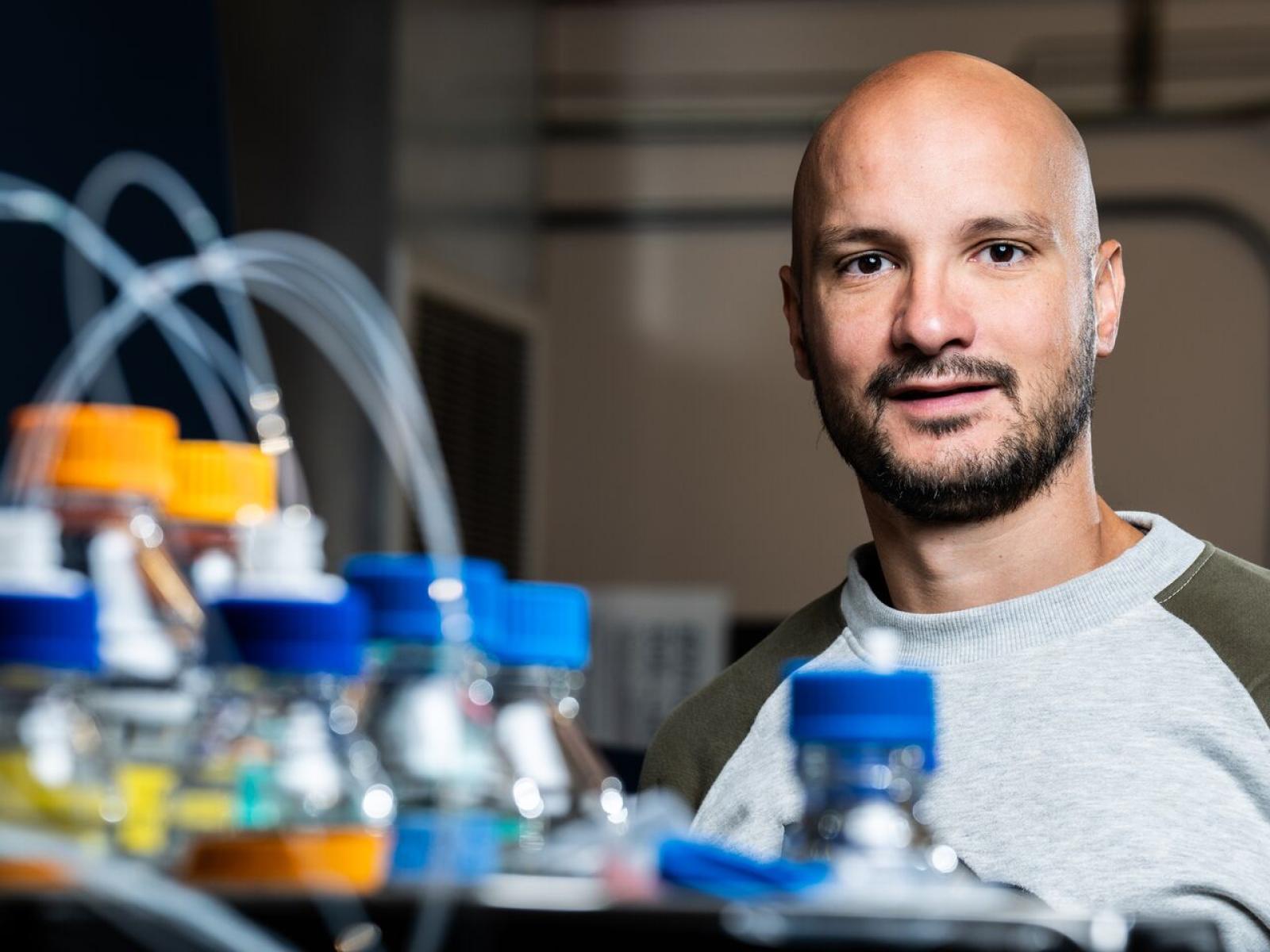PNNL Scientist Designing Tools for Imaging Carbohydrates in Human Kidneys and Brains
Dušan Veličković’s five-year project could help inform drug design for diabetes and Alzheimer’s

Dušan Veličković, a mass spectrometry imaging scientist at Pacific Northwest National Laboratory, is establishing a high-throughput capability for precise carbohydrate imaging that could lead to the design of more effective drugs for the treatment of diabetes and Alzheimer’s disease.
(Photo by Andrea Starr | Pacific Northwest National Laboratory)
Dušan Veličković, a mass spectrometry imaging scientist at Pacific Northwest National Laboratory (PNNL), recently received a $2.1 million grant to develop techniques to understand how changes in carbohydrate structure affect human health.
Through the five-year National Institutes of Health (NIH) Maximizing Investigators’ Research Award (MIRA), Veličković plans to establish a high-throughput capability for precise carbohydrate imaging that could lead to the design of more effective drugs for the treatment of diabetes and Alzheimer’s disease. The MIRA grant is awarded to early career investigators whose work supports NIH’s National Institute of General Medical Sciences.
The mass spectrometry imaging tools developed through Veličković’s project will allow scientists to examine the composition and structure of carbohydrates and glycomes—the entire carbohydrate pool within a biological system—as well as understand how they are processed and redistributed. This subsequently affects health and disease processes.
“Sugar metabolism that is occurring in human cells or in human tissues, and also changes in glycans, which are oligomeric sugars attached to protein, are very often hallmarks of disease. Knowing their structure can then direct the drugs that will help in the early diagnostic, prevention, or healing of disease,” said Veličković.
In the first three years of the project, Veličković and a team of PNNL researchers will analyze the carbohydrates and glycomes in various cells and functional units of healthy kidney samples and kidney samples from patients with chronic kidney disease and diabetes. Veličković chose the kidney as the model system for benchmarking because it is one of the organs most affected by glycome malfunction.
“Poor sugar metabolism leads to diabetes, and we need to know where the sugar we eat ends up, how it alters our system, where and what cell types are responsible for metabolism, or are most affected by it,” Veličković said. “These tools that I’m developing will enable us to get that knowledge.”
These tools will network the locations of the different elements of the glycome in human tissue, allowing the functional connections between these elements to be identified at the cellular level.
Later in the project, Veličković will apply the tools to other human samples, including brains with neurodegenerative disorders—specifically, Alzheimer’s disease.
By understanding how carbohydrates and glycomes affect cell behavior, scientists can design targeted drugs.
“For example, glycoproteins are very important in Alzheimer’s disease—especially how specific sugar structures we call sialic acid are organized,” explains Veličković.
Ties to DOE research
The applications for the tools that Veličković is developing apply beyond human health. Precise carbohydrate imaging also has implications for research impacting the bioeconomy and beyond. Veličković also collaborates on research sponsored by the Department of Energy, Office of Science Biological and Environmental Research.
For these projects, the research team plans to use the techniques and analyses developed to look at the glycoproteins and lignocellulose in cell walls to improve the creation of byproducts.
PNNL researchers may also apply these tools to study the carbohydrate structures that microbes use to communicate with the environment and to understand the implications of changes in their carbohydrate composition.
Determining the precise locations of carbohydrates is an important challenge in understanding the function and capabilities of biosystems across our world—from human health to biomanufacturing. Veličković’s tools are poised to make broad impacts.
Published: July 21, 2025